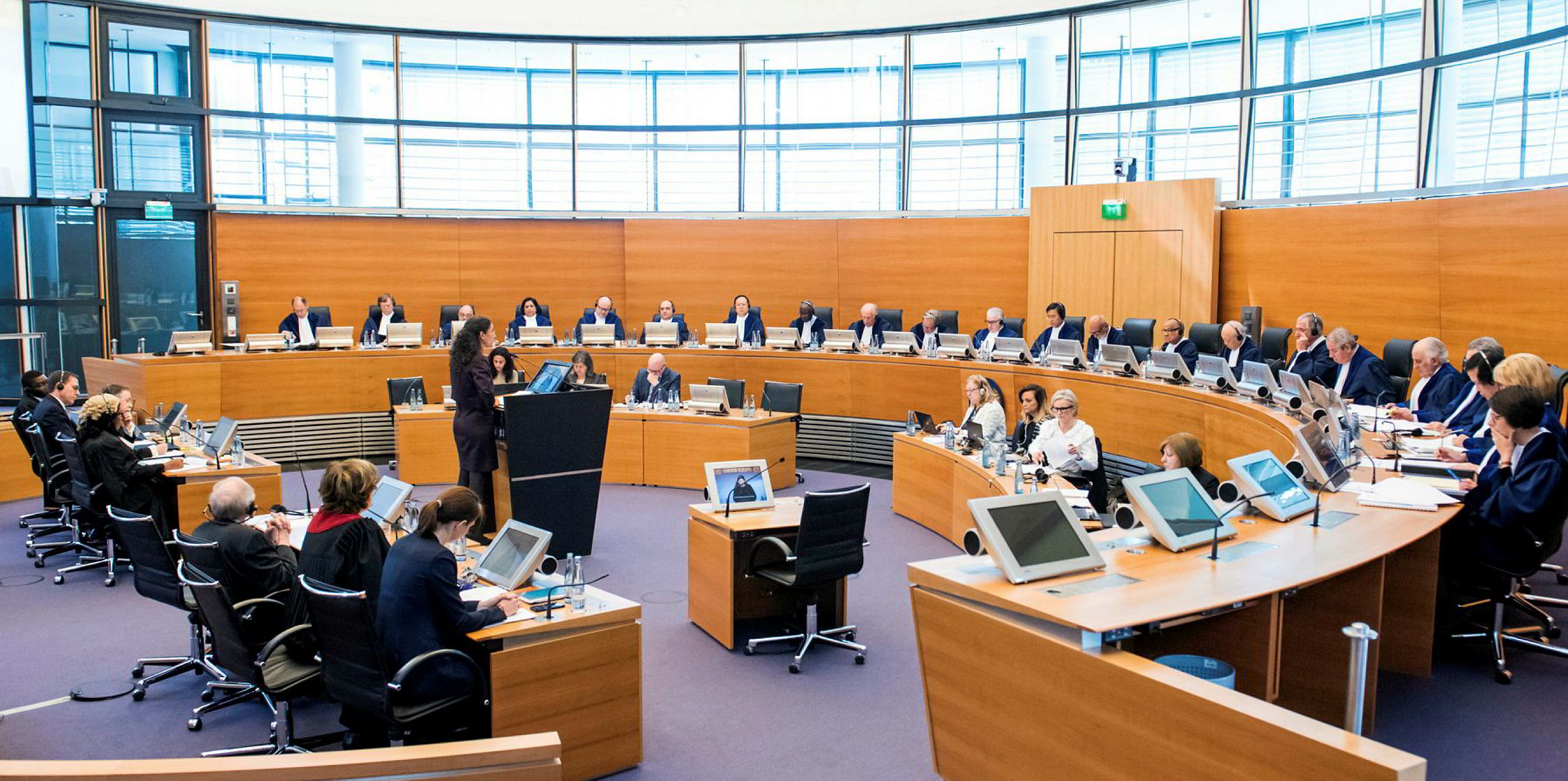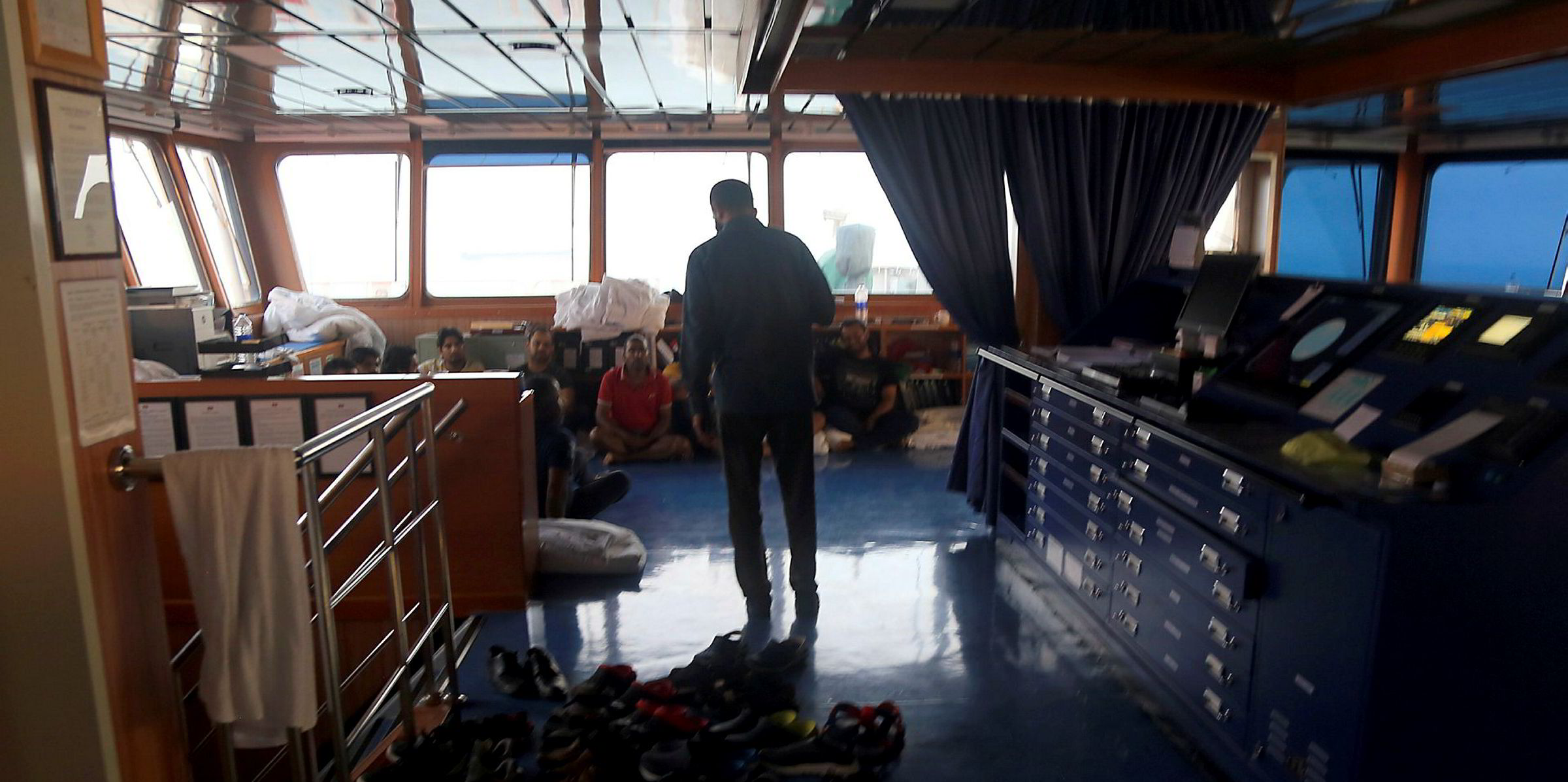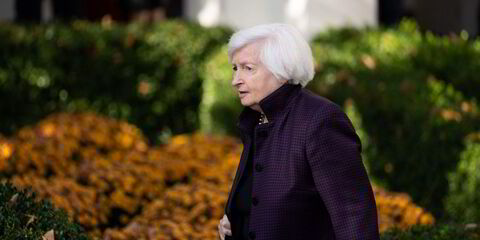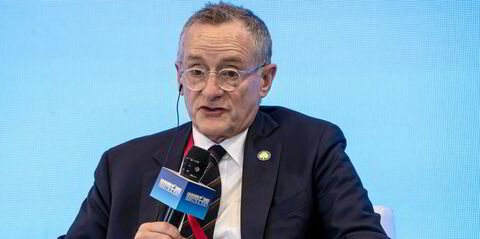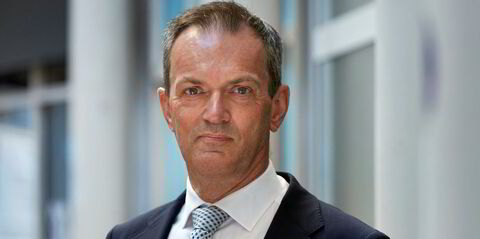Proudly displayed in the foyer of a court building in one of Hamburg’s most prestigious suburbs is a model of the Wappen von Hamburg.
The original galleon, which entered service in 1669, bristled with cannons and served as a convoy ship protecting the city’s merchant fleet from pirates.
Today, it welcomes visitors to the International Tribunal for the Law of the Sea (ITLOS), an independent judicial body whose 21 judges provide a different form of protection — the peaceful settlement of law of sea-related disputes.
Those disputes can cover a wide range of issues but especially the prompt release of vessels and crew, freedom of navigation, hot pursuit of ships alleged to have violated a country’s laws, the jurisdiction of coastal states in maritime zones, flags of convenience and illegal fishing.
Proceedings can be instituted by the flag state to ITLOS and hearings fixed much faster than many other legal procedures.
The existence of ITLOS has been mentioned more often recently following the detention by Iran of the UK-flag, 49,683-dwt Stena Impero (built 2018).
But that dispute is unlikely to be resolved by ITLOS, as Iran is not a signatory to the 1982 United Nations Convention on the Law of the Sea (UNCLOS) for which the tribunal has jurisdiction over interpretation or application.
However, many other significant cases have been brought before ITLOS, including the recent freeing of ABC Maritime’s 7,600-dwt San Padre Pio (built 2012), which had been accused by the Nigerian Navy of engaging in illicit ship-to-ship transfers of gasoil.
On time, on budget
The tribunal voted 17 members to four to have the vessel released.
Switzerland, which argued that bunkering activities by the ship in the exclusive economic zone (EEZ) of Nigeria came under the convention’s freedom of navigation entitlement, was told to post a $14m bond. Nigeria’s position is that it has jurisdiction over bunkering activities within its EEZ.
Hamburg was chosen as the seat of the tribunal in 1981 in competition with Split in the former Yugoslavia and the Portuguese capital, Lisbon.
Its courthouse and secretariat offices, designed by Baron Alexander and Baroness Emanuela von Branca of Munich, were constructed once UNCLOS entered into force in 1994.
Boutros Boutros-Ghali, then secretary general of the UN, laid the foundation stone in 1996, and three-and-a-half years later, the new headquarters were officially opened in the presence of his successor, Kofi Annan.
The building was delivered on time and to budget, funded 80% by the German government and 20% by the Free and Hanseatic City of Hamburg.
Flags of UN member states line the first floor — displayed in alphabetical order — as do the flags of Palestine and the European Union, non-UN members but party to UNCLOS.
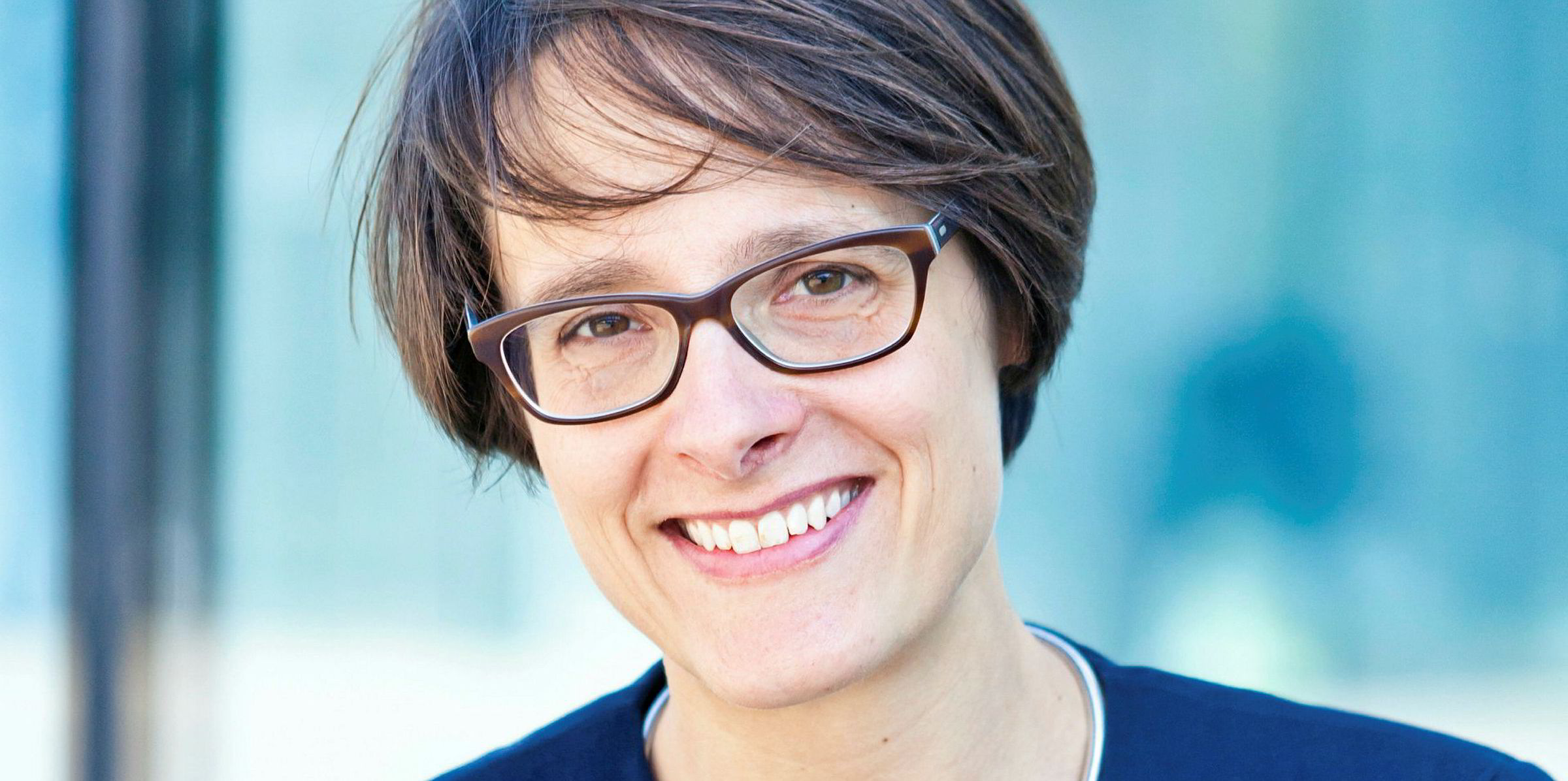
The ITLOS secretariat or registry, headed until recently by Philippe Gautier, comprises 38 staff of 18 nationalities.
Gautier served ITLOS for more than two decades but announced his resignation, effective at the end of last month, following his appointment as registrar of the UN’s International Court of Justice in The Hague.
Deputy registrar Ximena Hinrichs Oyarce, an author of publications on the law of the sea and international law, has taken over as acting registrar until Gautier’s replacement is announced.
The 167 states, plus the EU, that are parties to UNCLOS are responsible for funding the tribunal, contributions reflecting the economic size of individual states. The EU pays a fixed contribution.
The tribunal’s budget for the 2019-2020 fiscal year has been set at €20.5m ($22.7m). Its official languages are English and French.
Secret ballot
Its 21 judges are elected by parties to the convention for nine years, although judges can be re-elected. Elections for one-third of the judges are held every three years, a system designed to provide continuity.
Those judges, according to Article 2 of the Statute of the Tribunal, should be individuals “enjoying the highest reputation for fairness and integrity and of recognised competence in the field of the law of the seas”.
No more than one judge of the same nationality can sit on the bench, to ensure a geographical spread and to see that the principal legal systems of the world are represented.
The president, Jin-Hyun Paik of South Korea, is the only judge permanently based in Hamburg. The others travel to the German maritime capital for cases, drafting judgments and organisational sessions.
A secret ballot among judges every three years elects the president and vice president, currently David Attard of Malta.
Paik, who has been president since 2017 and is responsible for directing the work of the tribunal, has the casting vote in the event of a split decision by the bench. A “first among equals” is how one colleague referred to him when TradeWinds visited ITLOS.
Some of the judges have served the tribunal for a long time. Tafsir Malick Ndiaye of Senegal has been there from the beginning, while Jose Luis Jesus of Cape Verde was originally elected 20 years ago.
Special chamber
Often the judges are professors. One provision is that they do not hold an office within government after their election.
Where a party to a case has no judge of its own nationality on the bench, it may nominate someone.
This happened in the San Padre Pio case, in which two additional, or ad hoc judges, were selected, one Swiss, the other American.
The tribunal also provides for a special chamber when parties choose not to go before all 21 judges.
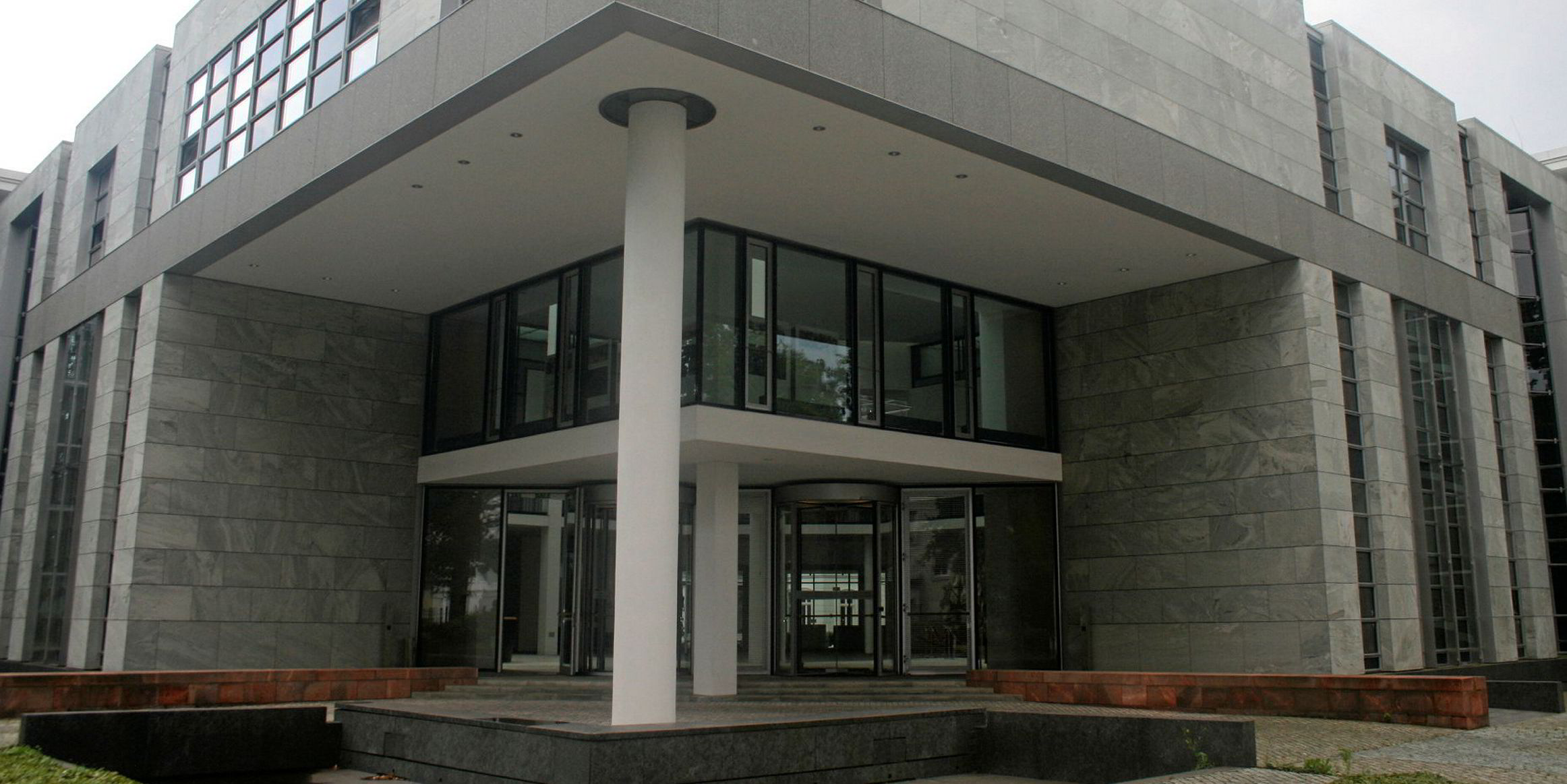
One instance was a dispute over limitation of the maritime boundary between Ghana and Ivory Coast in the Atlantic Ocean. Three judges from the main bench were nominated, plus two ad hoc judges.
In July, it was announced that Professor Dr Anna Petrig, a Human Rights at Sea advisory board member, had become the first female ad hoc judge.
Elsa Kelly of Argentina, elected in 2011, sits alongside two other permanent female judges, Neeru Chadha of India and Liesbeth Lijnzaad of the Netherlands.
